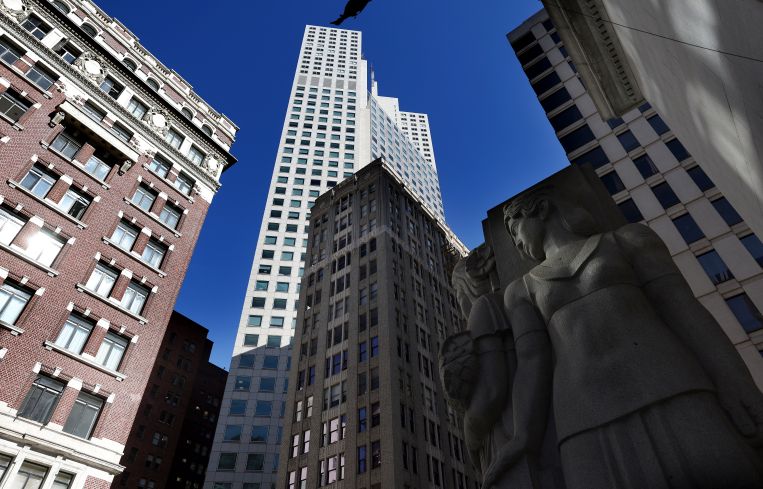Moody’s: 84 Percent of Maturing CMBS Office Loans to Face Refi Challenges in 2023
Moody’s expects that banks won’t refinance most of the fixed-rate conduit loans due this year
By Brian Pascus May 18, 2023 5:06 pm
reprints
Nearly 90 percent of commercial mortgage-backed securities (CMBS) office loans maturing in 2023 will face refinancing challenges, according to new data released by Moody’s Analytics. While the fundamentals of the economy remain strong, commercial real estate sales volumes, lending volumes and asset values all declined in the first quarter of the year and are not expected to pick up so long as interest rates remain high.
The gloomy conclusions about the state of CRE capital markets came Thursday afternoon during a Moody’s First Quarter 2023 CRE Quarterly Economy Briefing, which featured analysis on the overall economy together with targeted breakdowns of various CRE asset price spheres and capital markets activity points.
The most discouraging data — surprise! — was from the office sector.
Approximately 84 percent of $7.8 billion in fixed-rate CMBS conduit loans for offices set to mature this year are likely to face difficulties when they try to be refinanced, according to Kevin Fagan, head of CRE economic analysis at Moody’s Analytics.
“Ultimately, not all of these loans that are in this 84 percent will default or be liquidated,” Fagan said. “Some owners will find new equity to save quality assets, and some borrowers will get extensions and workouts as we work through this down cycle.
“But we certainly expect the maturity wave of offices to add some pricing clarity on how offices that have to be forced-sold into the market will be priced by opportunistic investors,” he added.
National office vacancies reached 19 percent in the first quarter of 2023, according to Moody’s, a level not reached in nearly 30 years and close to the historic high of 1991 that occurred following the savings & loan crisis of the late 1980s and early 1990s.
“With some properties in San Francisco and other areas trading at what appears to be massive discounts, the news isn’t really about rents and vacancies, per se, but what these assets are now worth in terms of valuation given the uncertainty wrought by the pandemic and the widespread persistence of hybrid work,” said Victor Calanog, head of CRE economics at Moody’s Analytics.
Overall CRE values have weakened the last two quarters, which Moody’s expects to see continue as a downward trend in the year’s final two quarters.
“Office is the most stressed sector in our forecast with about a 25 percent expected price correction,” said Fagan. “There will be some degree of distressed sales in the market over the next year or two. That will put added downward pressure on average price indices.”
Lending is down across all CRE lender types, for a total of 50 percent year-over-year decline in fourth quarter 2022, with non-agency CMBS lending volume declining a whopping 90 percent year-over-year, per Moody’s.
“The majority of what’s happening is a capacity issue,” said Fagan. “Banks in particular, which are nearly 40 percent of the stabilized CRE lending market, are seeing the dual pressure from lack of trading volume and loan payoffs in addition to a continuing decline of deposits.”
On the multifamily side, the flood of Class A multifamily units scheduled to enter the market this year will create a glut of new supply in a softer economic environment, according to Thomas LaSalvia, director of economic research, Moody’s Analytics.
“Combine this weakening of resilient demand, affordability issues and record new supply, and we’re going to get a slow and steady rise in vacancy rates as well as below-average rent growth for next few years,” LaSalvia said.
It wasn’t all doom and gloom, however, in the eyes of Moody’s CRE research team.
Calanog noted that the U.S. is at historically low unemployment levels (3.4 percent), job growth stayed steady in the first quarter of the year (with roughly 300,000 new jobs added to the economy), real GDP increased by 1.1 percent in the first quarter, and real earnings should remain healthy as inflation wanes.
“The U.S. economy remains remarkably resilient,” he said. “The economy grew at, or around, what we expected. Job creation remains pretty robust.”
Brian Pascus can be reached at bpascus@commercialobserver.com


